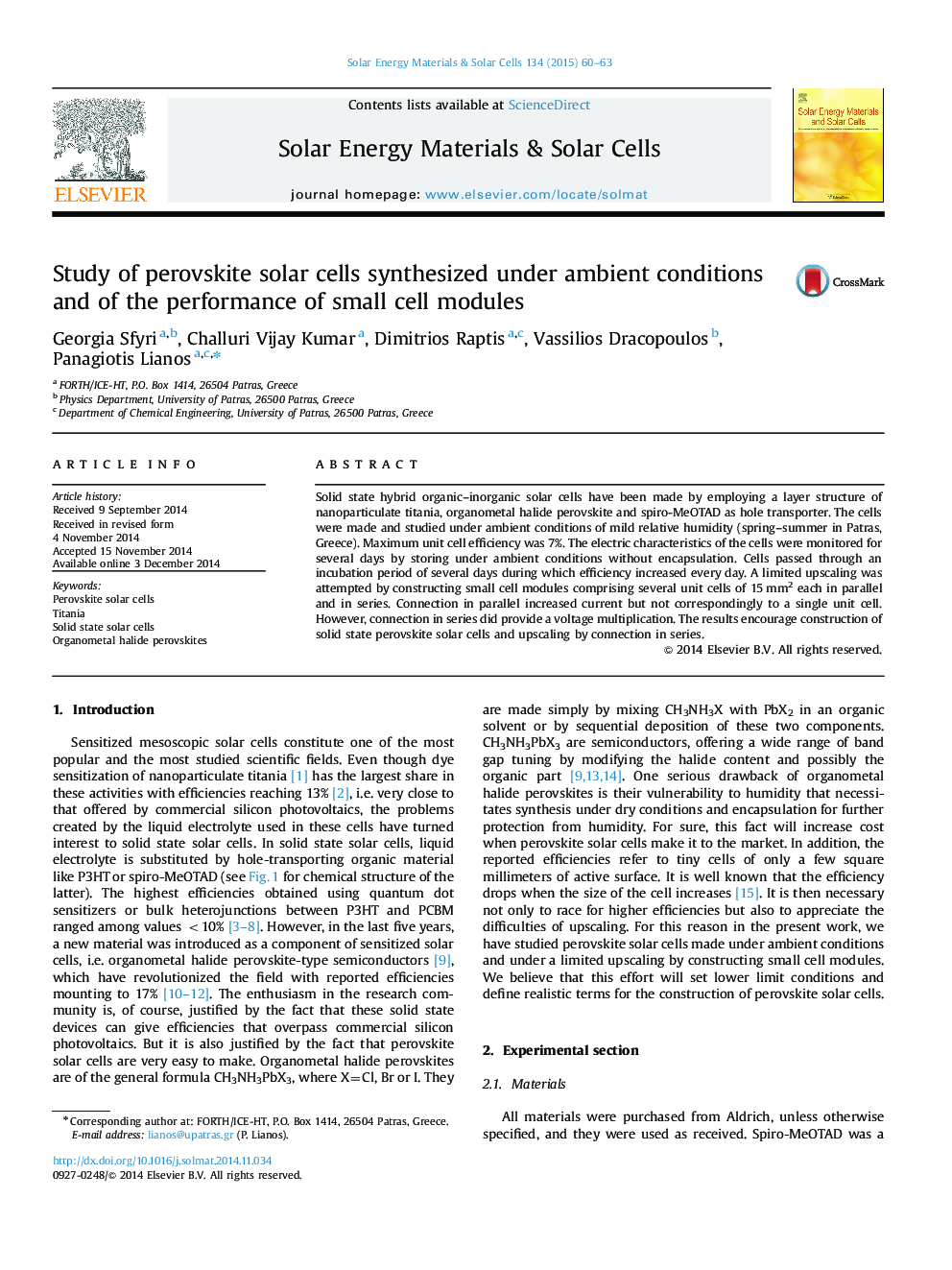| Article ID | Journal | Published Year | Pages | File Type |
|---|---|---|---|---|
| 77891 | Solar Energy Materials and Solar Cells | 2015 | 4 Pages |
•Perovskite solar cells made under ambient conditions of 50–60% relative humidity.•Behavior of the cells under storing in the same conditions without encapsulation.•Assessment of the possibility of constructing such cells under ambient conditions.•Upscaling by connection unit cells in parallel and in series.
Solid state hybrid organic–inorganic solar cells have been made by employing a layer structure of nanoparticulate titania, organometal halide perovskite and spiro-MeOTAD as hole transporter. The cells were made and studied under ambient conditions of mild relative humidity (spring–summer in Patras, Greece). Maximum unit cell efficiency was 7%. The electric characteristics of the cells were monitored for several days by storing under ambient conditions without encapsulation. Cells passed through an incubation period of several days during which efficiency increased every day. A limited upscaling was attempted by constructing small cell modules comprising several unit cells of 15 mm2 each in parallel and in series. Connection in parallel increased current but not correspondingly to a single unit cell. However, connection in series did provide a voltage multiplication. The results encourage construction of solid state perovskite solar cells and upscaling by connection in series.
Graphical abstractFigure optionsDownload full-size imageDownload as PowerPoint slide
